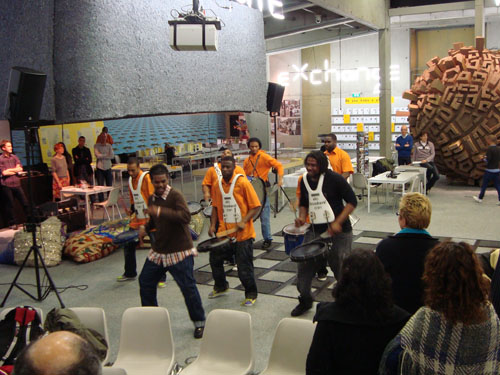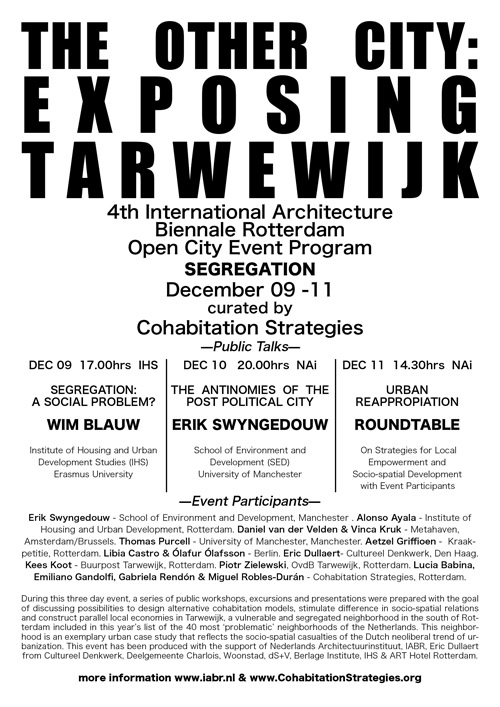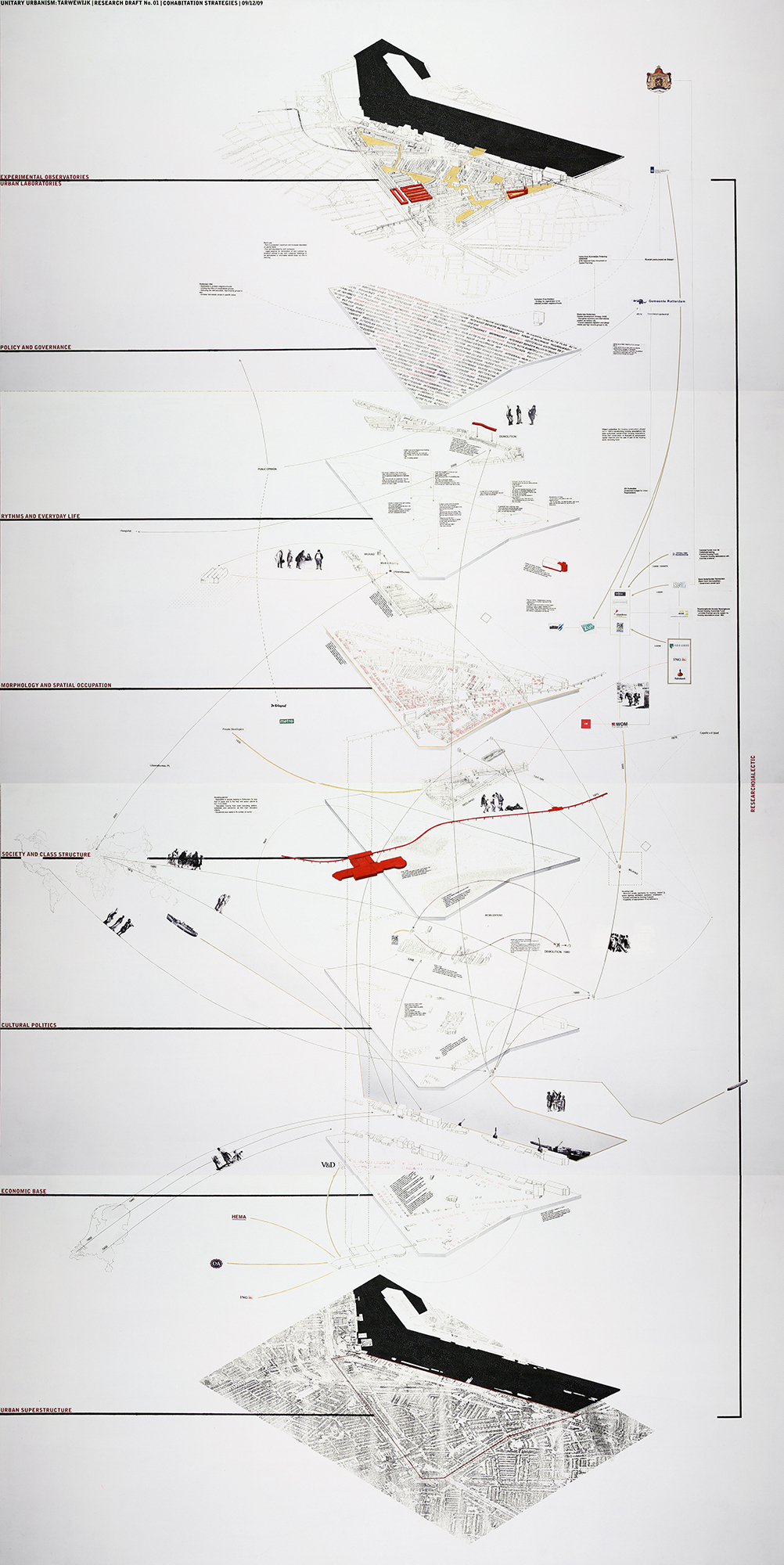Project as
Project as
CohStra (Lucia Babina, Emiliano Gandolfi, Gabriela Rendón and Miguel Robles-Durán)
Commissioned by
Self produced project
In collaboration with
Support
-Nederlands Architectuurinstituut
-Eric Dullaert from Cultureel Denkwerk
-Deelgemeente Charlois
-Woonstad, dS+V
-Berlage Institute
-IHS
-ART Hotel Rotterdam
Project Contributions
-ABC Brassband
-Alonso Ayala, architect
-Wim Blauw, sociologist
-Libia Castro, artist
-Aetzel Griffioen, philosopher
-Vinca Kruk, designer
-Ólafur Ólafsson, artist
-Thomas Purcell, political economist
-Erik Swyngedouw, geographer
-Daniel van der Velden, designer
-Piet Vollard, architect
-Gon Zifroni, designer
THE OTHER CITY: EXPOSING TARWEWIJK
The Other City was initiated as part of the ‘urban segregation’ cluster of the 4th International Architecture Biennale Rotterdam (IABR), Open City: Designing Coexistence (Open City Event Program). The project was based in a district recently ranked as one of the most problematic in the city of Rotterdam and the country, Tarwewijk. The project aimed to expose the socio-spatial decline and restructuring of low-income districts in Rotterdam while stressing the outcomes produced by the ongoing neoliberal housing and urban policies in the Netherlands. This project included action research, community meetings, discussion groups, district excursions, a publication, an exhibition and a public assembly at the IABR.
Lucia Babina, one of the co-funders of the cooperative have previously worked in the district in an art-based project. LB close relationship with local groups and residents informed her about the neighborhood’s vulnerability to a number of national and local policies taking place to eradicate illegal practices among tenants and landlords, housing decline, and racial segregation. These, as many other conditions, ongoing in Tarwewijk were studied and exposed during the biennale. In addition, alternative solutions grounded in the district’s needs and priorities. Soon after the events, the initial short term action-research evolved into a thorough participatory-action research.The project was awarded by the Netherlands Architecture Funds and a number of local groups, academic institutions and art organizations became active collaborators.


